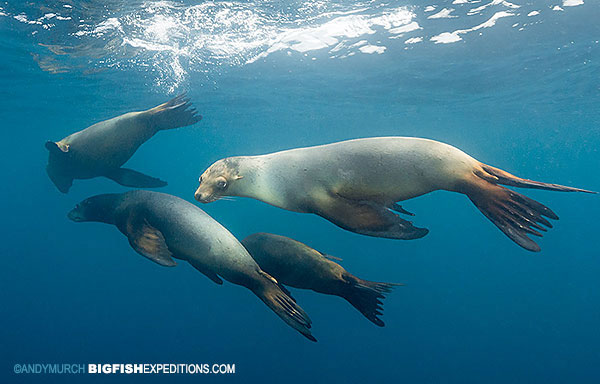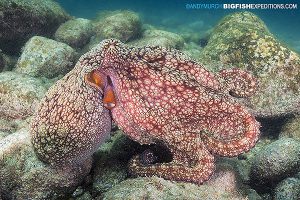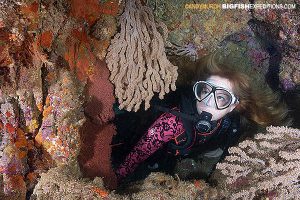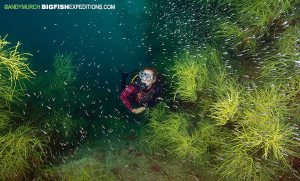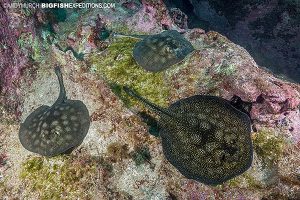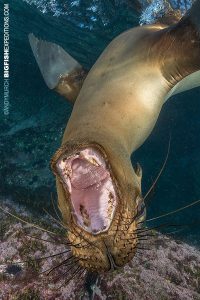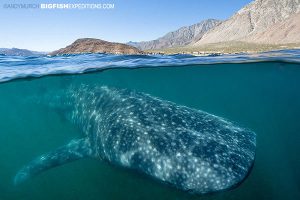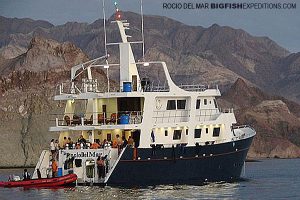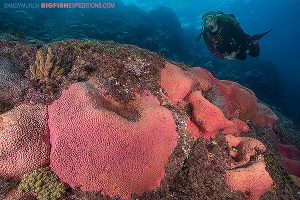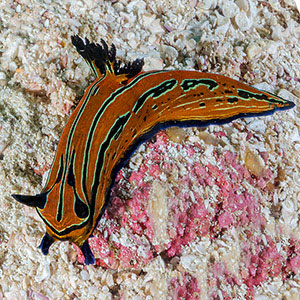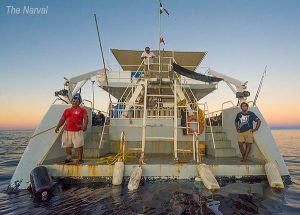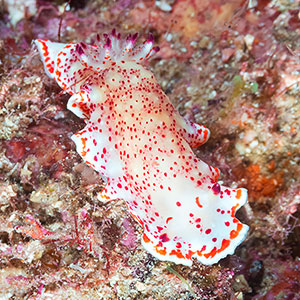Our 2015 Sea of Cortez Adventure in a Nutshell: Great diving, Terrible boat.
But don’t let that put you off because we have chartered the beautifully designed Rocio del Mar for next year’s trip. That means we’re expecting the same great diving with some serious luxury too 🙂
The Reef Diving
We focused our diving around the lush reefs of the Midriff Islands. Like all reefs in the eastern Pacific, the Midriff reefs a made of volcanic rock. A few of the shallower sites that we dove were relatively barren but the majority were peppered with hard corals.
The more current swept sites were encrusted with enormous, beautiful pink sponges.
Below the 20m/60ft mark, the reef structure completely changed. The smaller corals gave way to lush forests of black coral. Black coral is actually bright green when its alive. The skeletal core of the coral trees are the black part that artisans polish and carve into jewelry and sculptures.
We discovered these deep water coral gardens on virtually every dive site that we visited. Normally reefs of this quality would appear much deeper but the plankton rich surface layers of the northern Sea of Cortez create the perfect environment for black coral to flourish.
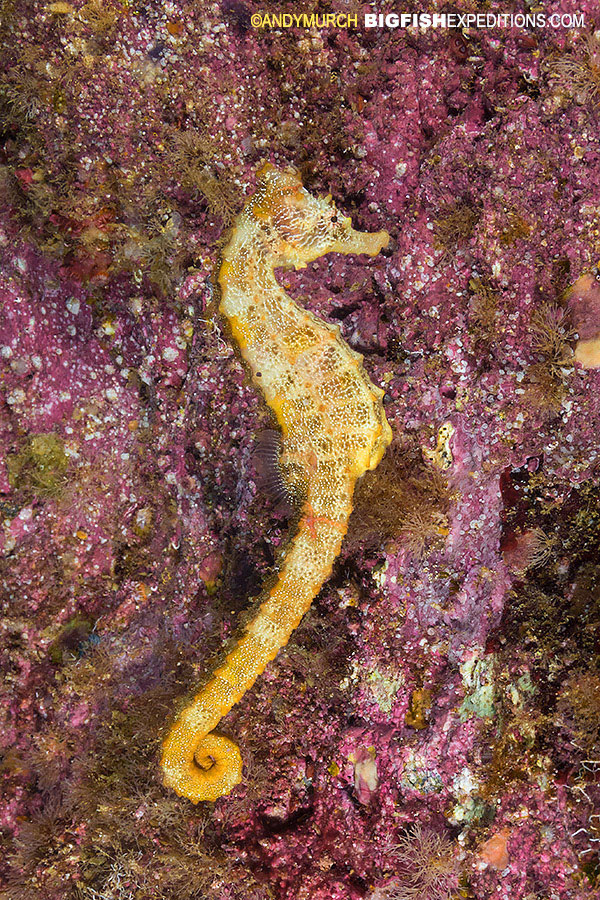
The Little Stuff
On every dive there was no shortage of eye candy. It was tough to concentrate on the macro life because there was always big animals to look at too but on a few dives I did strap on a macro lens to snap a few of the many colorful nudibranchs.
We also stumbled upon quite a few Pacific seahorses. Most were scruffy and brown to blend with the reef but a few (probably the males) were bright yellow and more than happy to pose for the camera.
Ray City
If you like rays, you would love this trip. There were rays on every dive including haller’s round stingrays, cortez round stingrays, bullseye round stingrays, diamond stingrays, longtail stingrays, giant electric rays, bullseye electric rays and at least two types of mobula rays!
Cetaceans
The Gulf of California is a breeding and calving ground for many species of whales. We spotted a large but illusive pod of sperm whales and a few fin whales that we got relatively close to. We also saw lots of pilot whales and managed to swim with a few but I didn’t take any underwater images this year.
Lobos del Mar (Sea Wolves)
During the week we visited three different sea lion colonies. The encounters were excellent!
The most common pinnipeds that you are likely to run into in the Sea of Cortez are California sea lions. Fortunately, they happen to be one of the most playful species too.
A great place to interact with them is at an island called Isla del Animas which translates as the Island of Ghosts.
As you approach the island you can hear their forlorn howling from a mile away. Once the pangas approach closely, the sea lions leap from surrounding rocks and swim back and forth impatiently, waiting to play.
The young and sub-adult sea lions came incredibly close. One in particular delighted in trying to bite its reflection in my dome port 🙂
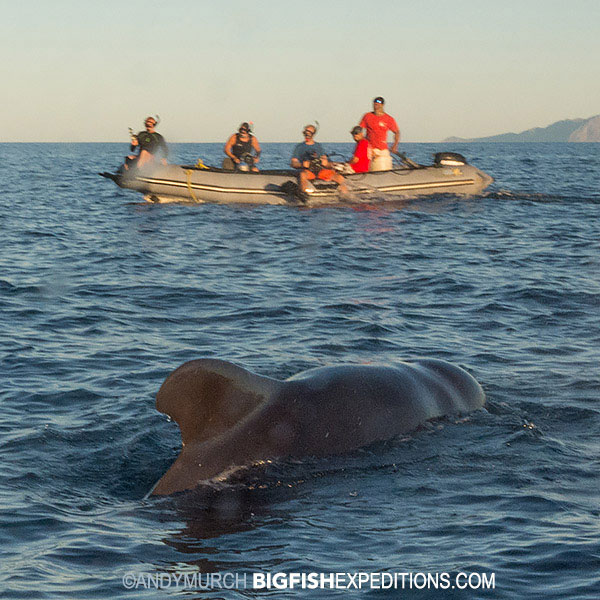
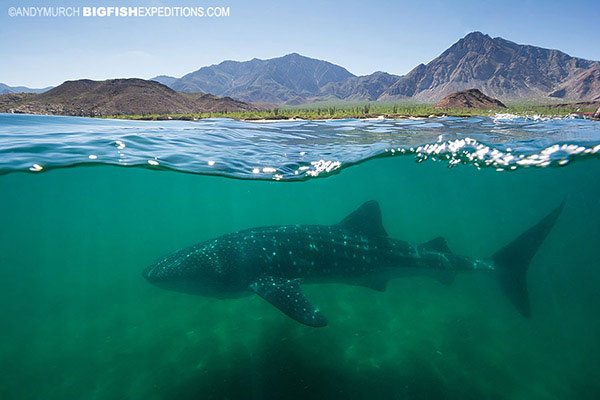
Whale Sharks
Perhaps the most exciting encounters were with the whale sharks at Bahia de los Angeles. I have swum or dove with whale sharks all over the world but seeing them in such shallow water with a mountainous desert backdrop made this quite a unique encounter.
Enter the Narval
So, the wildlife encounters were great. The ship that we chartered was a different matter. I knew when I chartered the Narval that it was a bit run down but I was assured that it would be spruced up for our two back-to-back week long charters. Initially the conditions on the ship were fine. Good food, friendly helpful crew and the ship got us where we wanted to go – albeit a bit more slowly than we would have liked. I chose the Narval because it was the only ship in the region that agreed to let us dive with humboldt squid if we found some. Eventually we did see a few but they were tiny juveniles so we didnt end up getting in with them.
The problems started on the second week when a tropical storm swept over the area we were diving in. The captain clearly should have run for shelter before he did because we found ourselves getting thrown around in enormous seas.
During the night, one of our pangas (chase boats) sank below the waves and we were forced to cut the rope and let drift into the depths.
Next, the heavens opened and torrential rains hammered down on us as we limped towards the mainland in search of cover. This is when we found out that the new lick of paint that Narval had received was apparently not storm proof. The water pooling on the decks quickly made its way down to the cabins and soaked almost every bed.
The guests dried their personal effects off as best they could and curled up wherever they could find a dry spot in the salon. Fortunately, everyone on the trip was incredibly good understanding about the whole ordeal.
The next day we dried out the cabins, rented another panga from a fishing village and continued the ‘adventure’. The rest of the trip went swimmingly 🙂
Needless to say, we will never step foot on that rust bucket again. For next year’s Sea of Cortez Adventure we have chartered the Rocio del Mar – a beautfully designed luxury liveaboard dive vessel that sleeps 20 divers in comfortable WATERPROOF cabins! They won’t let us jump in humboldt squid but they use powerful lights to bring them up to the surface at night so that we can see them and the braver divers can try hand-camming to get some shots of them off the swim step.
If you are looking for an easily accessible diving adventure (guests fly into Phoenix, Arizona) in a fascinating body of water, join us in August 2017 for our next Sea of Cortez Big Animal Safari.
